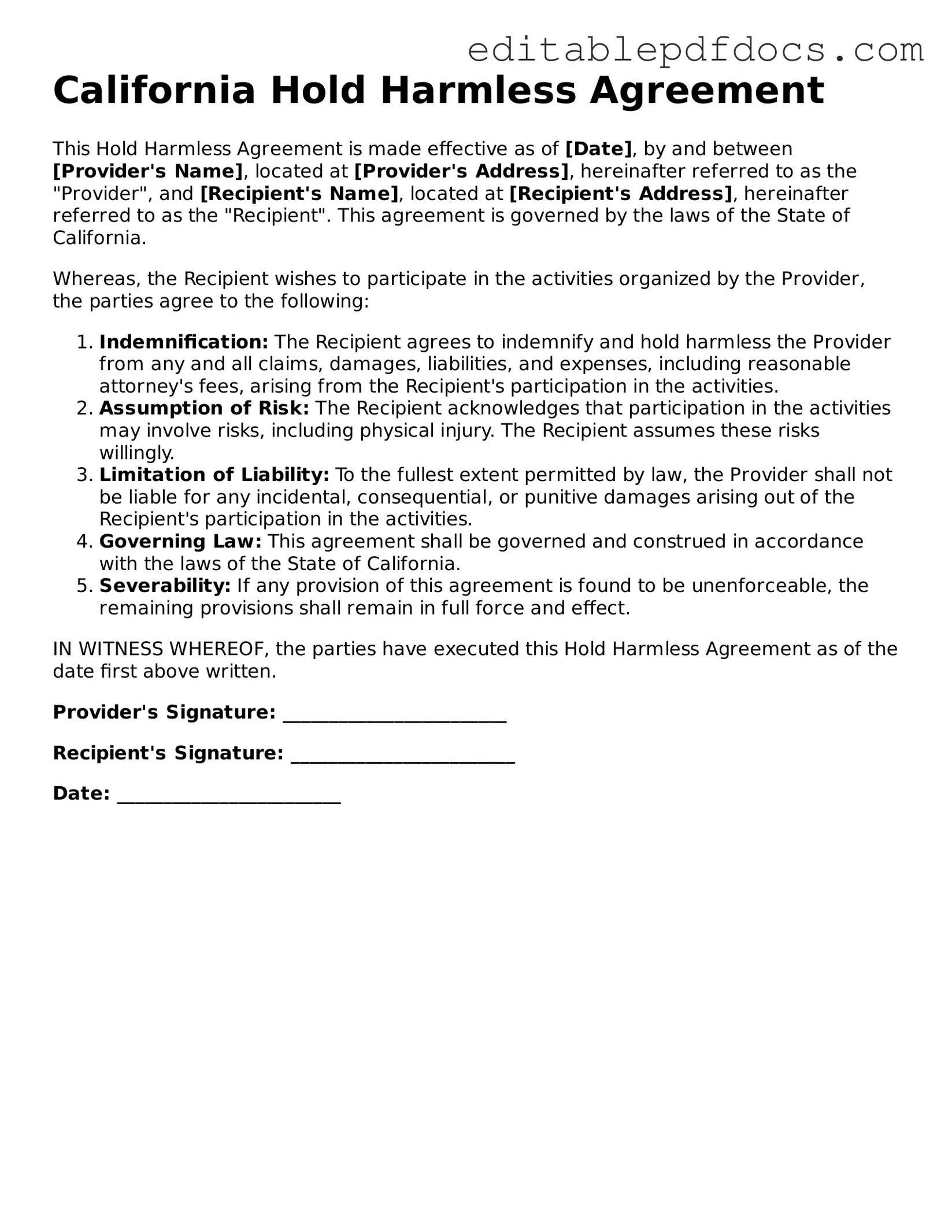Hold Harmless Agreement Document for California
The California Hold Harmless Agreement is a legal document designed to protect one party from liability or claims that may arise from the actions or negligence of another party. This form is commonly used in various contexts, including rental agreements, events, and construction projects, where risks are inherent. Understanding and properly filling out this agreement is crucial to ensure that all parties are aware of their responsibilities and protections.
To take the next step, please fill out the form by clicking the button below.
Open Editor Now
